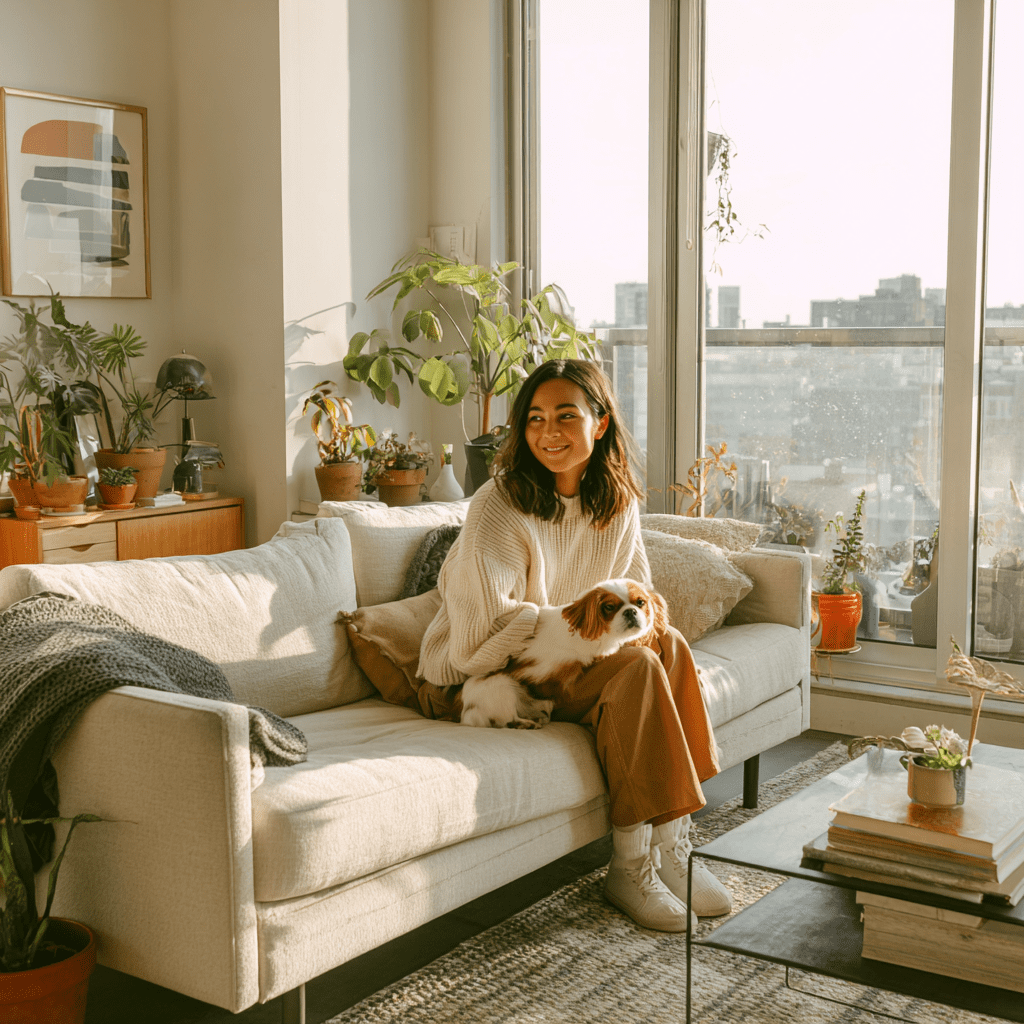When you live in an apartment, choosing the right dog breed is crucial for a peaceful and happy home—for both you and your furry friend. Contrary to popular belief, not all small dogs are perfect for apartments, and not all large dogs are a poor fit. The ideal apartment dog is one that fits your space, lifestyle, noise tolerance, and energy level.
In this comprehensive guide, we’ll break down the top dog breeds that thrive in apartment living, what makes them a good fit, and how to keep them happy in a smaller environment.
🏢 What Makes a Dog Breed Apartment-Friendly?
Before listing the breeds, let’s explore what “apartment-friendly” really means. Good apartment dogs typically share the following traits:
- Low to moderate energy levels (or easily managed with walks)
- Quiet demeanor – not prone to excessive barking
- Smaller size (though not always necessary)
- Friendly and adaptable personality
- Good with neighbors and other dogs
- House-trainable and content indoors
With proper exercise, mental stimulation, and training, many dogs—even larger ones—can flourish in apartments.
🐶 Top Dog Breeds for Apartment Living

1. French Bulldog
Why it’s great: Frenchies are small, quiet, and love lounging. Their compact size and friendly disposition make them ideal for urban life.
- Size: Small (under 28 lbs)
- Energy Level: Low to moderate
- Barking: Rare
- Needs: Daily short walks, indoor play
Bonus: They’re couch potatoes, but still playful and affectionate.
2. Cavalier King Charles Spaniel
Why it’s great: Cavaliers are sweet, quiet, and very people-oriented. They adapt well to smaller spaces and are gentle with kids and seniors.
- Size: Small (13–18 lbs)
- Energy Level: Moderate
- Barking: Minimal
- Needs: Regular walks, affection
Watch out: Prone to separation anxiety—needs human interaction.
3. Chihuahua
Why it’s great: These tiny dogs require very little space and exercise. They’re also fiercely loyal and can be very affectionate with their owners.
- Size: Toy (3–6 lbs)
- Energy Level: Low to moderate
- Barking: Can be yappy without training
- Needs: Warm space, gentle handling
Training tip: Socialization is key to avoid nervous behavior.
4. Pug
Why it’s great: Pugs are silly, charming, and enjoy lounging. They’re not overly active and are content with a daily stroll.
- Size: Small (14–18 lbs)
- Energy Level: Low
- Barking: Low
- Needs: Regular cleaning of facial folds
Health note: Avoid overexertion in heat due to their short noses.
5. Boston Terrier
Why it’s great: Lively but manageable, Boston Terriers are compact and well-mannered indoors. They’re also good with other pets and people.
- Size: Small (12–25 lbs)
- Energy Level: Moderate
- Barking: Low
- Needs: Short daily walks
Personality: Friendly, sociable, and clownish in a good way.
6. Dachshund
Why it’s great: They have moderate exercise needs and do well indoors. Their small frame and loyal personality make them great city companions.
- Size: Small (16–32 lbs)
- Energy Level: Moderate
- Barking: Moderate to high
- Needs: Mental stimulation, stairs may be a challenge
Training tip: Can be stubborn, early house training is vital.
7. Bichon Frise
Why it’s great: These fluffy, hypoallergenic dogs are joyful, gentle, and don’t shed much. They thrive indoors with moderate activity.
- Size: Small (12–18 lbs)
- Energy Level: Moderate
- Barking: Low
- Needs: Grooming, attention
Bonus: Excellent for allergy sufferers.
8. Greyhound
Why it’s great: Surprising to many, Greyhounds are extremely lazy indoors! Though tall, they are quiet, polite, and only need brief exercise.
- Size: Large (60–70 lbs)
- Energy Level: Low indoors, bursts outside
- Barking: Rare
- Needs: Soft bed, quick sprints
Nickname: “The 40-mph Couch Potato”
9. Shih Tzu
Why it’s great: Bred as royal lapdogs, they love being indoors and close to people. They rarely bark excessively and are easy to manage.
- Size: Small (9–16 lbs)
- Energy Level: Low
- Barking: Low
- Needs: Regular grooming, close companionship
Perfect for: Seniors, low-activity homes, and tight quarters.
10. Havanese
Why it’s great: These social, adaptable dogs are affectionate, intelligent, and relatively quiet. They thrive in both apartments and houses.
- Size: Small (7–13 lbs)
- Energy Level: Moderate
- Barking: Minimal
- Needs: Grooming, playtime
Bonus: Easy to train and friendly with strangers and pets.
🐕 Tips for Raising a Dog in an Apartment
Even with the perfect breed, you need to make some lifestyle adjustments to keep your pup happy and healthy:
🐾 1. Create a Potty Routine
- Use pee pads or artificial grass if necessary
- Stick to a schedule for walks
🐾 2. Manage Barking Early
- Teach the “quiet” command
- Distract with toys or treat puzzles
🐾 3. Exercise & Play
- Schedule daily walks (even short ones)
- Use hallway fetch or stair climbs
🐾 4. Socialization
- Introduce to neighbors, dogs, kids
- Take your dog to pet-friendly stores or patios
🐾 5. Use Enrichment Toys
- Kongs, snuffle mats, treat puzzles
- Rotate toys to prevent boredom
🤔 Things to Consider Before Getting a Dog in an Apartment
- Noise level: Will barking bother neighbors?
- Pet policy: Check your lease and landlord restrictions
- Breed restrictions: Some complexes limit breeds
- Exercise availability: Is there a park or dog area nearby?
- Time commitment: Will you be home enough?
✅ Final Thoughts
Apartment living doesn’t mean sacrificing the joy of dog ownership. With the right breed and thoughtful routines, dogs can thrive in small spaces and enrich your life every single day.
Whether you prefer the cuddly nature of a Cavalier, the goofy personality of a Pug, or the elegance of a Greyhound, there’s a perfect apartment pup for everyone.
Just remember: size doesn’t always equal suitability—temperament, noise, and energy level matter just as much!
